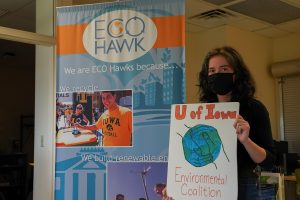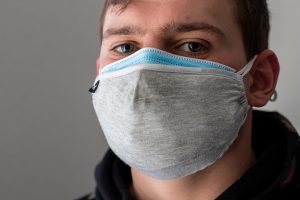University of Iowa environmental health expert says climate change could affect future infectious diseases
Climate change could foster future infectious diseases if temperatures warm in different parts of the world and billion-dollar disasters, like flooding and extreme storms, occur.
February 18, 2021
University of Iowa environmental health experts say climate change could advance the spread of future infectious diseases and frequency of global health disasters.
Peter Thorne, Head of the UI College of Public Health’s Department of Occupational and Environmental Health, said the typical time span between pandemics—such as the Spanish Flu of 1919 and the COVID-19 pandemic—is 100 years, but the next pandemic could be sooner.
“The question is, will we wait 100 years for the next one?” Thorne said. “When it does happen, we have to have leaders that embrace the science fully because part of our problem this time was a lot of mixed messaging with regard to how significant a threat this was to our country.”
According to a 2020 study by the director of the National Institute of Allergy and Infectious Diseases, Anthony Fauci said we can conclude from COVID-19 that we have entered a “pandemic era.”
According to the Pew Research Center, trust in science and medical scientists has grown among Democrats since the start of COVID-19. Just over half of Democrats have a great deal of confidence in medical scientists to act in the public interest, while 31 percent of Republicans expressed the same level of confidence in medical scientists.
Professor of Internal Medicine and Infectious Diseases Jack Stapleton said there have always been global pandemics, such as the Russian flu in 1890, and there are a lot of things that will contribute to disease transmission in the future.
He said if overcrowding occurs, people can be exposed to animal pathogens, which can cross over to the human species.
RELATED: Climate activists react with skepticism to annual climate statement
President of the UI Global Health Club Hallie Lartius wrote in an email to The Daily Iowan that the effects of climate change have potentially become even more dangerous to our health during the COVID-19 pandemic while people are more isolated, face more work and housing instability, and experience pandemic-related stress.
“There are also the root causes of climate change that impact disease, like pollution and poor farming practices,” Lartius wrote. “Unsustainable practices like these are unfortunately common in Iowa, harming our environment and our health at the same time.”
Thorne said we need to worry about “billion-dollar disasters,” like droughts, extreme heat events, and extreme flooding. These environmental impacts could advance an infectious disease involving mosquitoes and ticks, he said.
Johnson County Community Health Manager Sam Jarvis said after the COVID-19 pandemic, Johnson County Public Health will look back and discuss what worked well in mitigating COVID-19 to prepare for future public health crises.
“We are always looking at how we can do better,” Jarvis said. “How we can mitigate better, how we can get information to the public better because that’s ultimately what it’s about. We really want everyone to be informed.”
People who live in warm areas build up immunity from diseases that come from mosquitoes, Thorne said. He said if a disease is introduced in places where inhabitants don’t have immunity, the disease will spread very rapidly.
“We know that as certain places get wetter and warmer, they’re better able to support the life cycle of these mosquitoes and ticks,” Thorne said. “The diseases that they carry then will become common to places where they haven’t been before… you’ll suddenly have mosquitoes of the type that carry diseases like Dengue fever or chikungunya.”
Thorne said the spread of COVID-19 from the east to the United States is something to notice.
“We saw how fast COVID-19 and the SARS COVID virus moved around the world from its apparent origin to all over the world,” Thorne said. “That’s a product of how quickly diseases can move in this period of time.”






